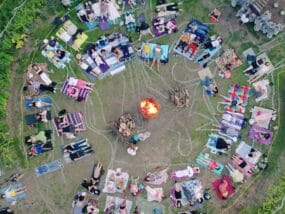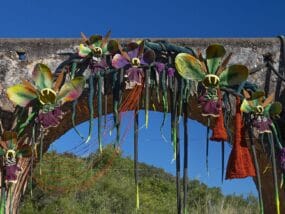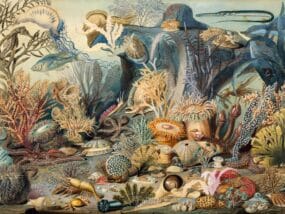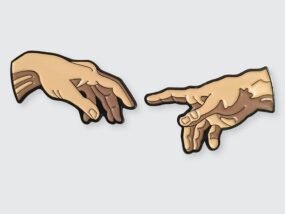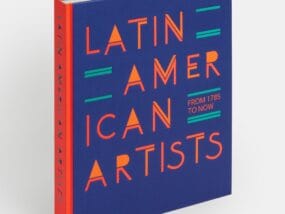Art
#community art
#Ibrahim Mahama
#installation
#site-specific
#textiles
Ibrahim Mahama Collaborates with Hundreds of Ghanaian Seamstresses to Envelop the Barbican in Purple Fabric
April 10, 2024
Grace Ebert
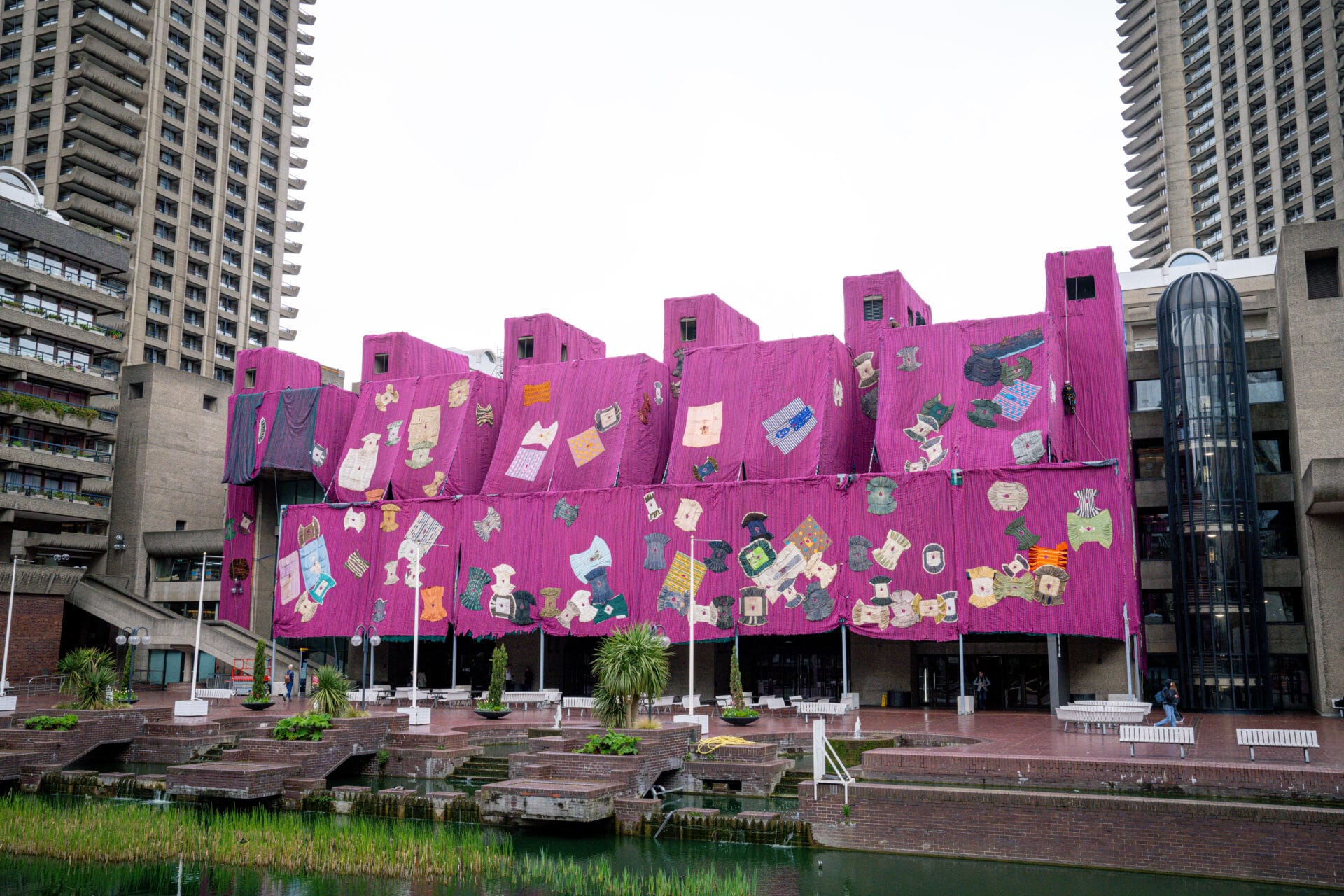
“Purple Hibiscus” (2023-24). All images courtesy of Ibrahim Mahama, Red Clay Tamale, Barbican Centre, London, and White Cube Gallery, shared with permission
Before the Blitz in 1940, the area of London that the Barbican now occupies was home to fabric retailers, tailors, furriers, and dressmakers. Following the war, architects devised a plan to create a monumental Brutalist building that would support their utilitarian, socialist vision for the future and designed the hulking concrete structure we know today.
A new commission draws on this political and cultural history as it wraps the stark, angular facade of the Barbican’s Lakeside Terrace in a 2,000-meter blanket of colorful textiles. Named after Chimamanda Ngozi Adichie’s 2003 novel, “Purple Hibiscus” is the project of Ghanaian artist Ibrahim Mahama, who collaborated with hundreds of weavers and sewing collectives to embroider large panels of cloth that embrace the building.

Making of “Purple Hibiscus” (2023-24)
Interested in collective labor and utilizing art to support local economies, Mahama bartered for about 100 batakaris, or robes common in Northern Ghana, for the project. The garments are highly valuable and often passed down through generations as a way to share family histories. By including them on the handwoven purple and pink panels, the artist is invoking the enduring lifecycle of clothing and how it communicates information about our identities and stories.
Much of the production took place in Tamale, Ghana, before the brightly colored fabric was transported to London and fitted onto the facade. Dotted with the patterned batakaris, the site-specific installation is a bold contrast to the largely gray building. Mahama adds:
Collecting the individual smocks from communities can be quite challenging but also opens up a portal of new formal aesthetics. Using the Alui Mahama sports stadium in Tamale as the primary studio space for the production of “Purple Hibiscus” allowed for us to organise the different layers of the work in ways we couldn’t have possibly imagined. The scale of the material forms needed some level of freedom, which the space gifted.
“Purple Hibiscus” is on view through August 18 and is part of Unravel: The Power and Politics of Textiles in Art. Watch the installation take shape on Instagram.
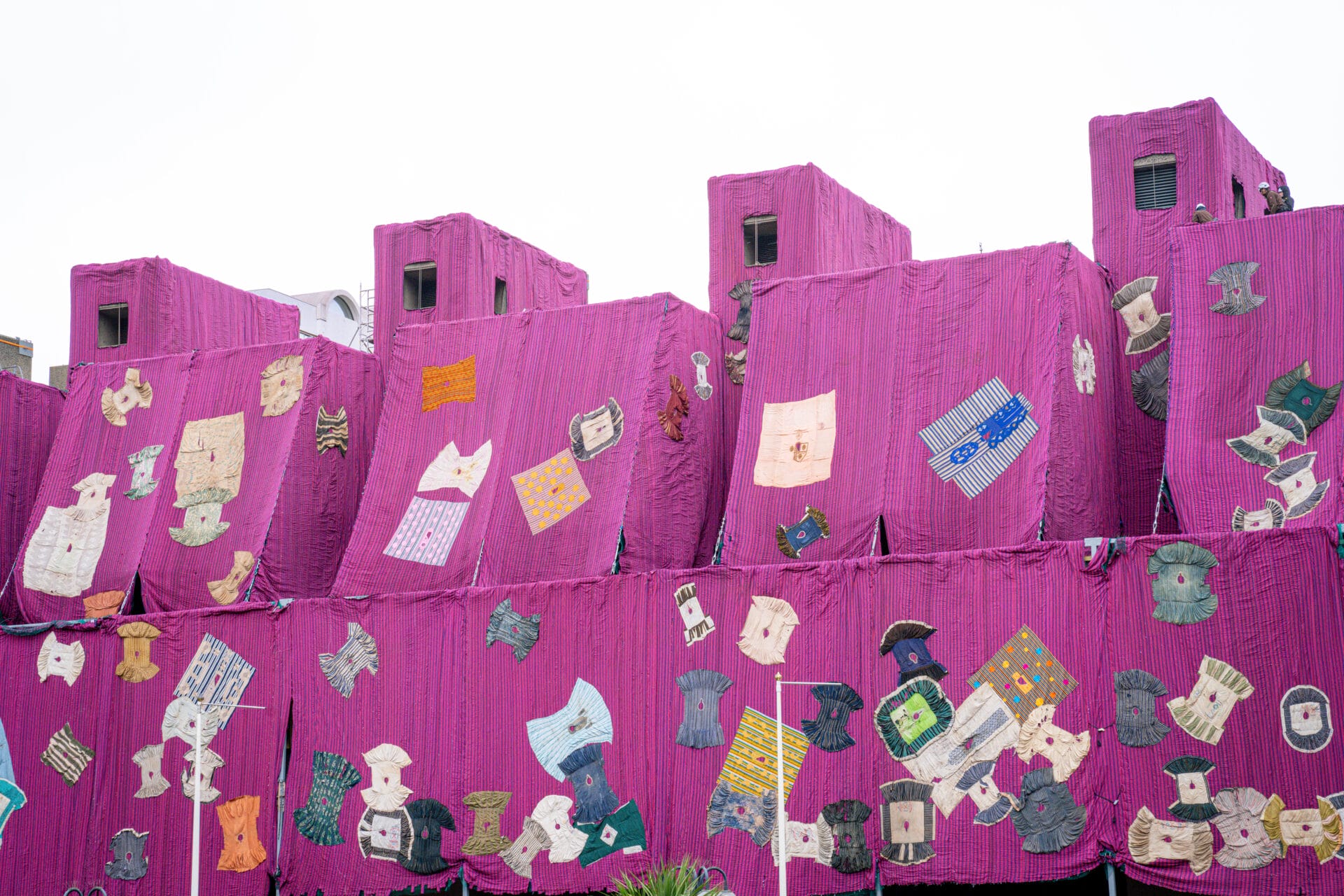
Detail of “Purple Hibiscus” (2023-24)
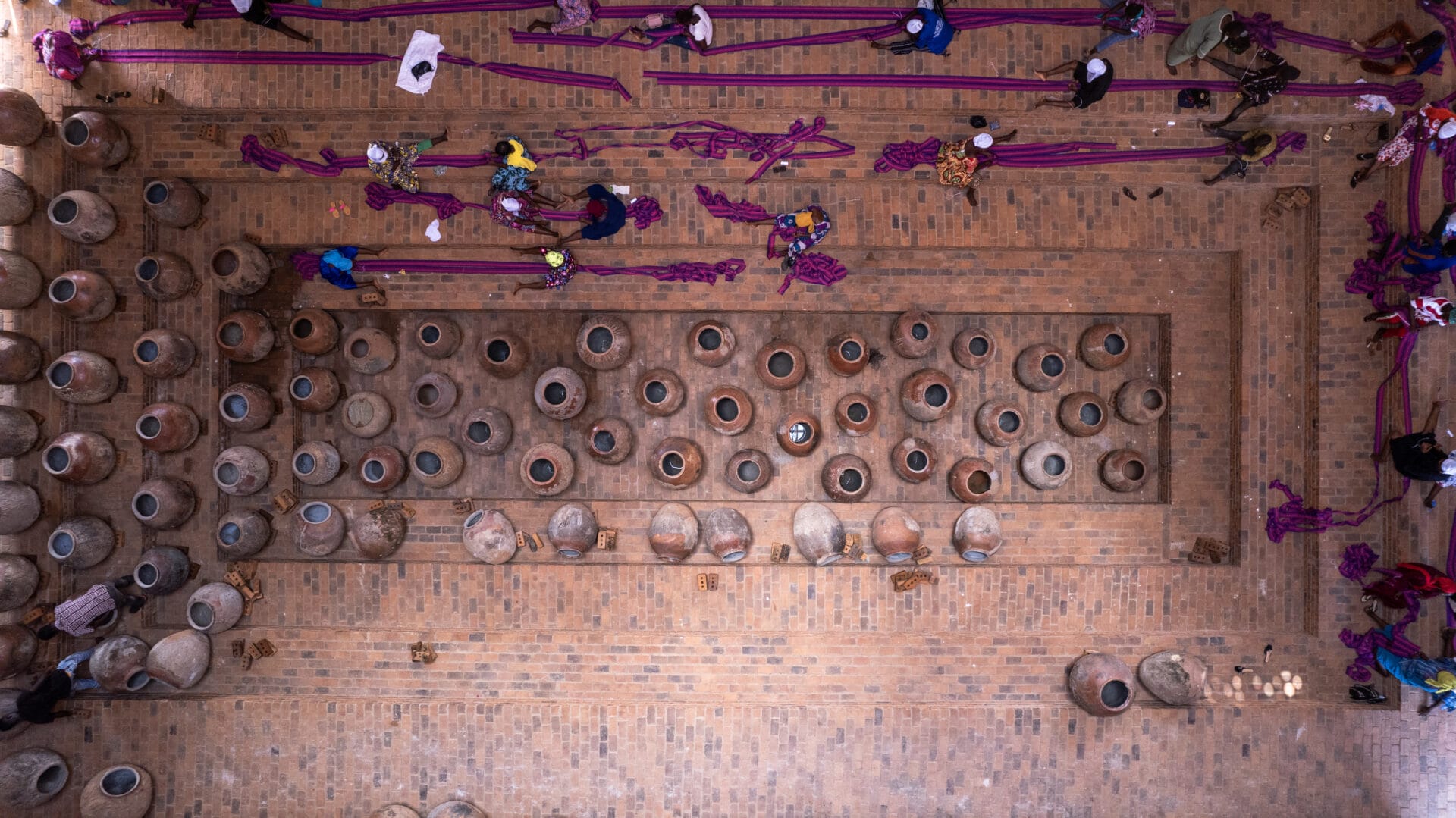
Making of “Purple Hibiscus” (2023-24)
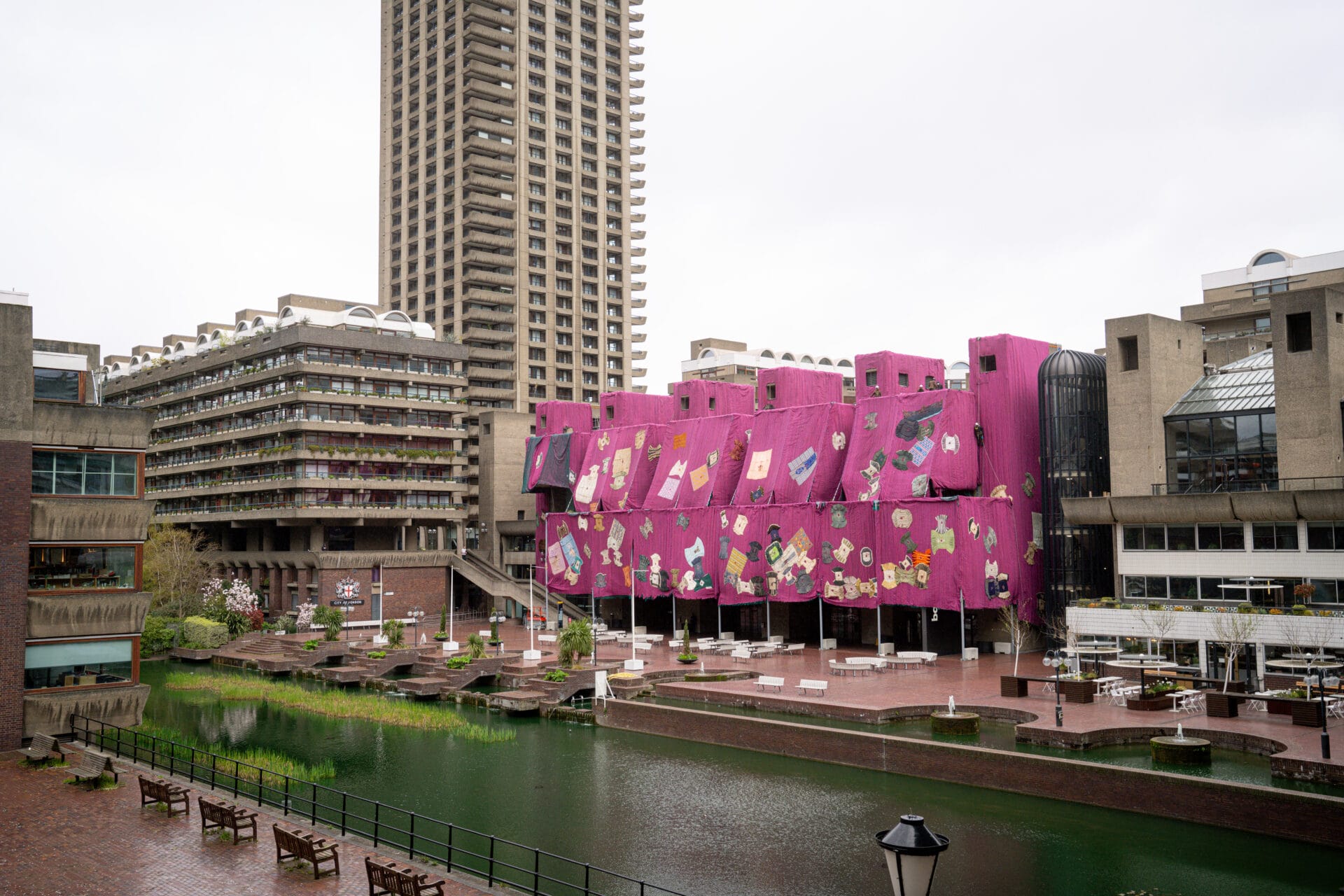
“Purple Hibiscus” (2023-24)
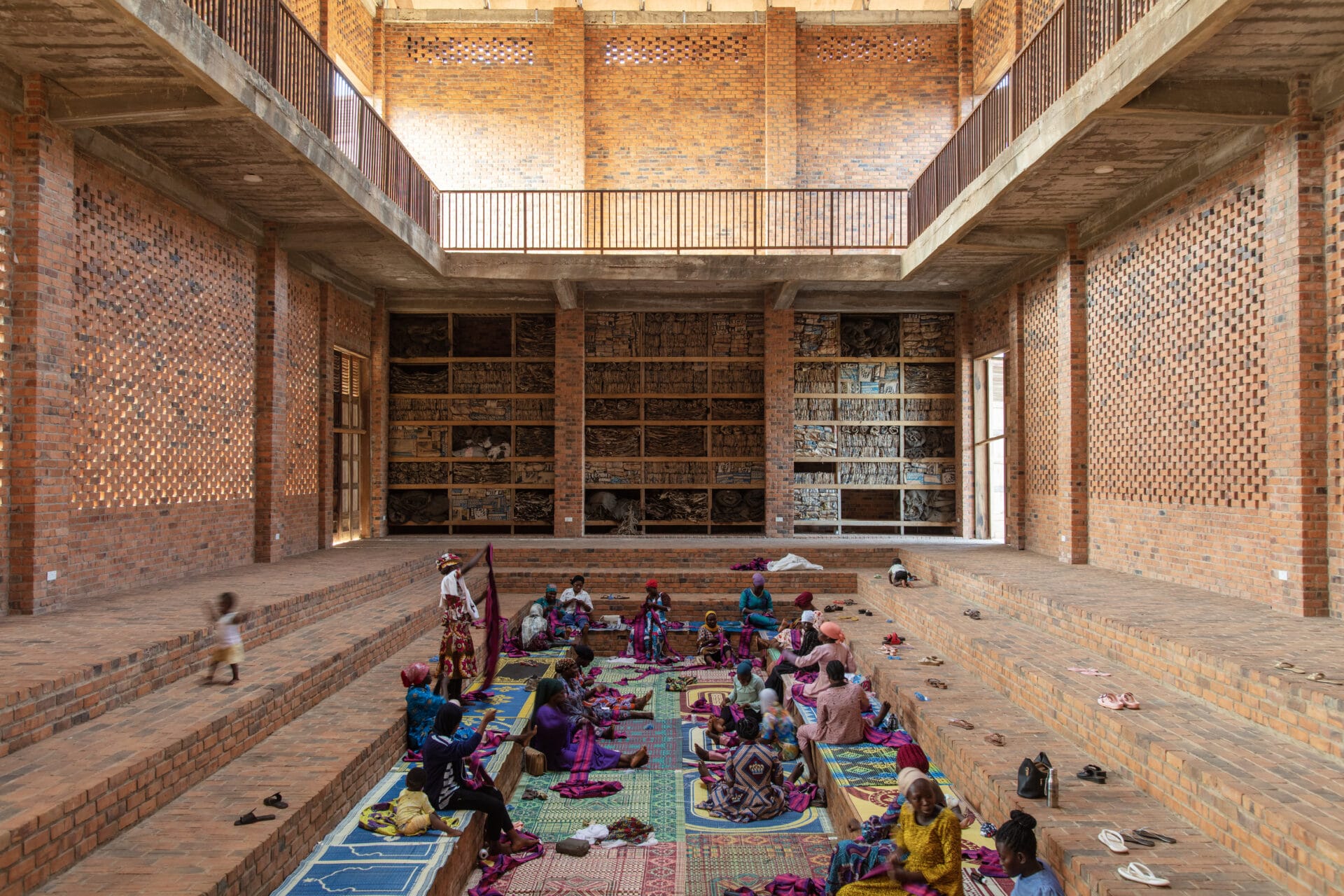
Making of “Purple Hibiscus” (2023-24)
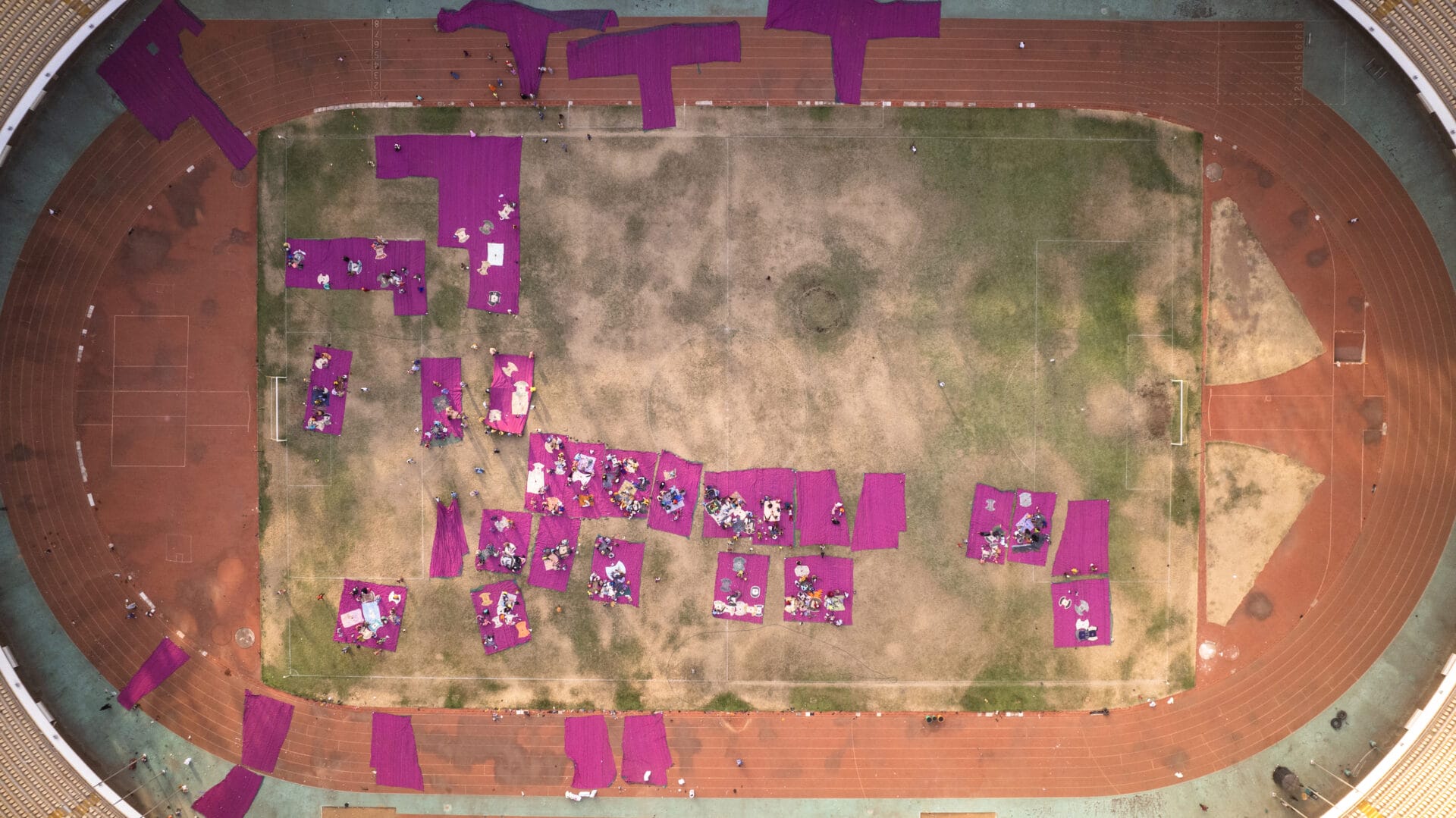
Making of “Purple Hibiscus” (2023-24)
#community art
#Ibrahim Mahama
#installation
#site-specific
#textiles
Do stories and artists like this matter to you? Become a Colossal Member today and support independent arts publishing for as little as $5 per month. You’ll connect with a community of like-minded readers who are passionate about contemporary art, read articles and newsletters ad-free, sustain our interview series, get discounts and early access to our limited-edition print releases, and much more. Join now!
Share this story
This article comes from the Internet:Ibrahim Mahama Collaborates with Hundreds of Ghanaian Seamstresses to Envelop the Barbican in Purple Fabric


